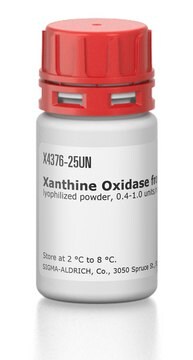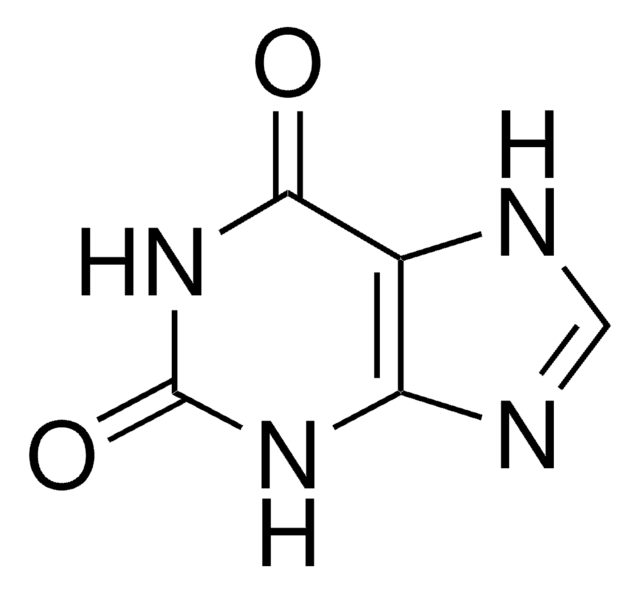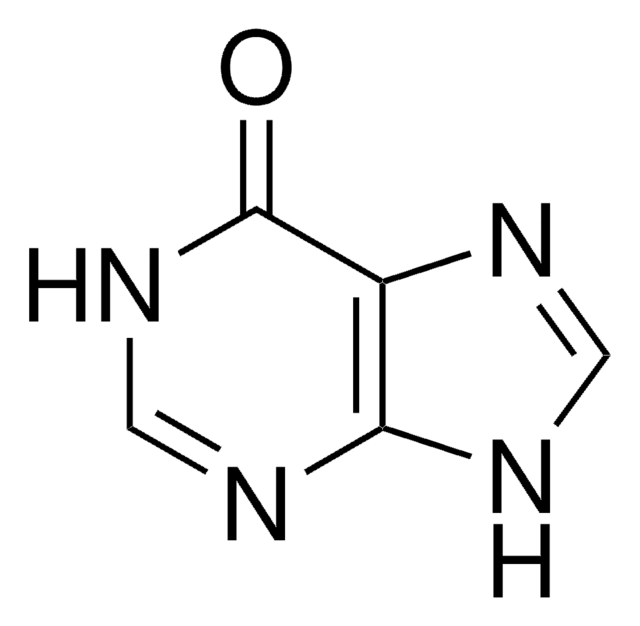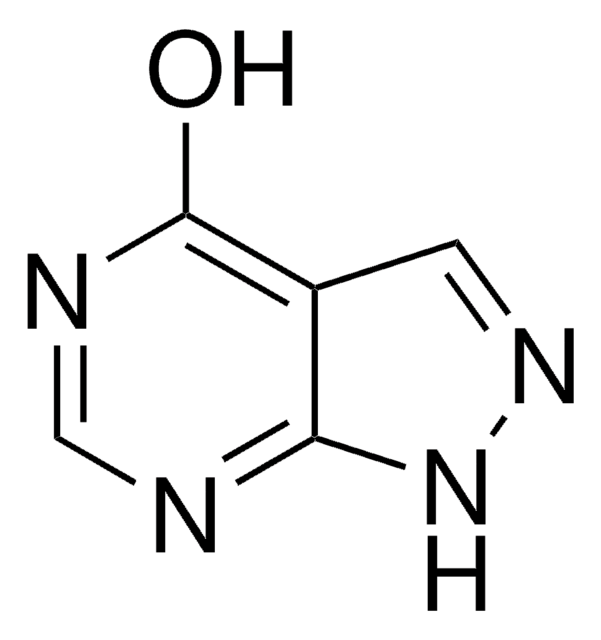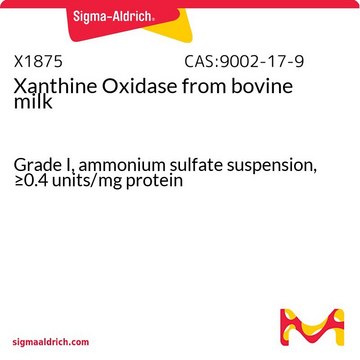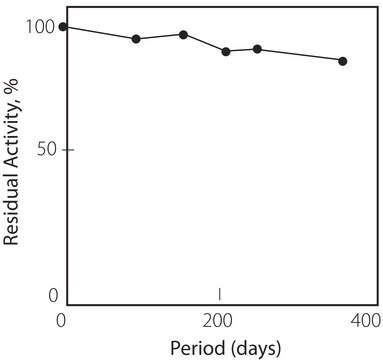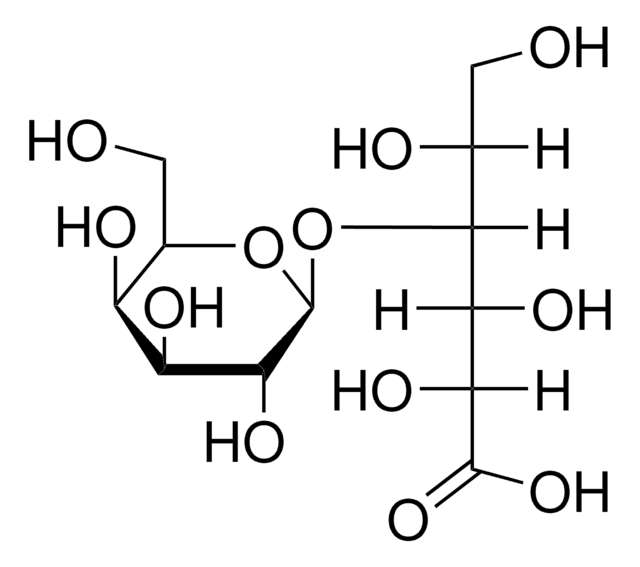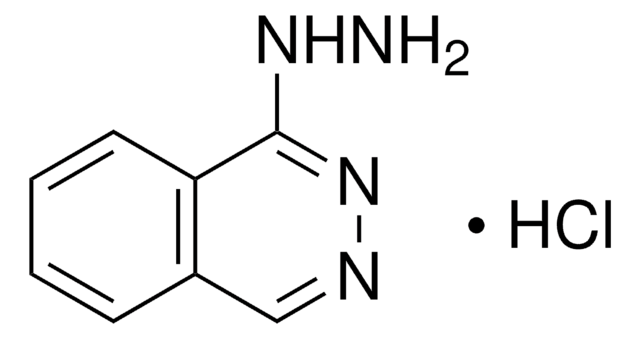Wichtige Dokumente
A8003
Allopurinol
xanthine oxidase inhibitor
Synonym(e):
1H-Pyrazolo[3,4-d]pyrimidin-4-ol, 4-Hydroxypyrazolo[3,4-d]pyrimidin, HPP
About This Item
Empfohlene Produkte
Biologische Quelle
synthetic (organic)
Assay
≥99% (TLC)
Form
powder
mp (Schmelzpunkt)
>300 °C (lit.)
Löslichkeit
1 M NaOH: soluble 50 mg/mL, clear to very slightly hazy, colorless to faintly yellow
Lagertemp.
room temp
SMILES String
O=C1NC=Nc2[nH]ncc12
InChI
1S/C5H4N4O/c10-5-3-1-8-9-4(3)6-2-7-5/h1-2H,(H2,6,7,8,9,10)
InChIKey
OFCNXPDARWKPPY-UHFFFAOYSA-N
Angaben zum Gen
human ... XDH(7498)
Suchen Sie nach ähnlichen Produkten? Aufrufen Leitfaden zum Produktvergleich
Anwendung
- to decrease the uric acid levels and study its effect on renal injury and inflammation in mice
- as a xanthine oxidase inhibitor to test panton-valentine leukocidin (PVL) neutrophil extracellular traps (NETosis) dependence on different enzymes, channels, or organelles using human polymorphonuclear cells (hPMNs)
- as a reference standard to study the inhibitory effect of olive leaf components on xanthine oxidase in vitro
- intravenous injection in mice for inhibition of xanthine oxidase
- use as an inhibitor of xanthine oxidase
- use as a positive control in xanthine oxidase inhibition assay
- use in the preparation of University of Wisconsin solution for osmotic stabilization to enhance the density differences between islets and acinar fragments during porcine islet purification
Biochem./physiol. Wirkung
Signalwort
Danger
H-Sätze
Gefahreneinstufungen
Acute Tox. 3 Oral - Skin Sens. 1
Lagerklassenschlüssel
6.1C - Combustible acute toxic Cat.3 / toxic compounds or compounds which causing chronic effects
WGK
WGK 2
Flammpunkt (°F)
Not applicable
Flammpunkt (°C)
Not applicable
Persönliche Schutzausrüstung
Eyeshields, Faceshields, Gloves, type P2 (EN 143) respirator cartridges
Hier finden Sie alle aktuellen Versionen:
Besitzen Sie dieses Produkt bereits?
In der Dokumentenbibliothek finden Sie die Dokumentation zu den Produkten, die Sie kürzlich erworben haben.
Kunden haben sich ebenfalls angesehen
Unser Team von Wissenschaftlern verfügt über Erfahrung in allen Forschungsbereichen einschließlich Life Science, Materialwissenschaften, chemischer Synthese, Chromatographie, Analytik und vielen mehr..
Setzen Sie sich mit dem technischen Dienst in Verbindung.